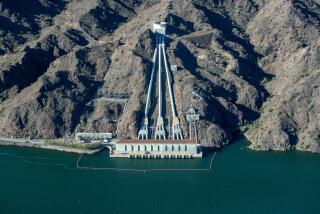Will Lake Mead’s plummeting water levels leave San Diego high and dry?
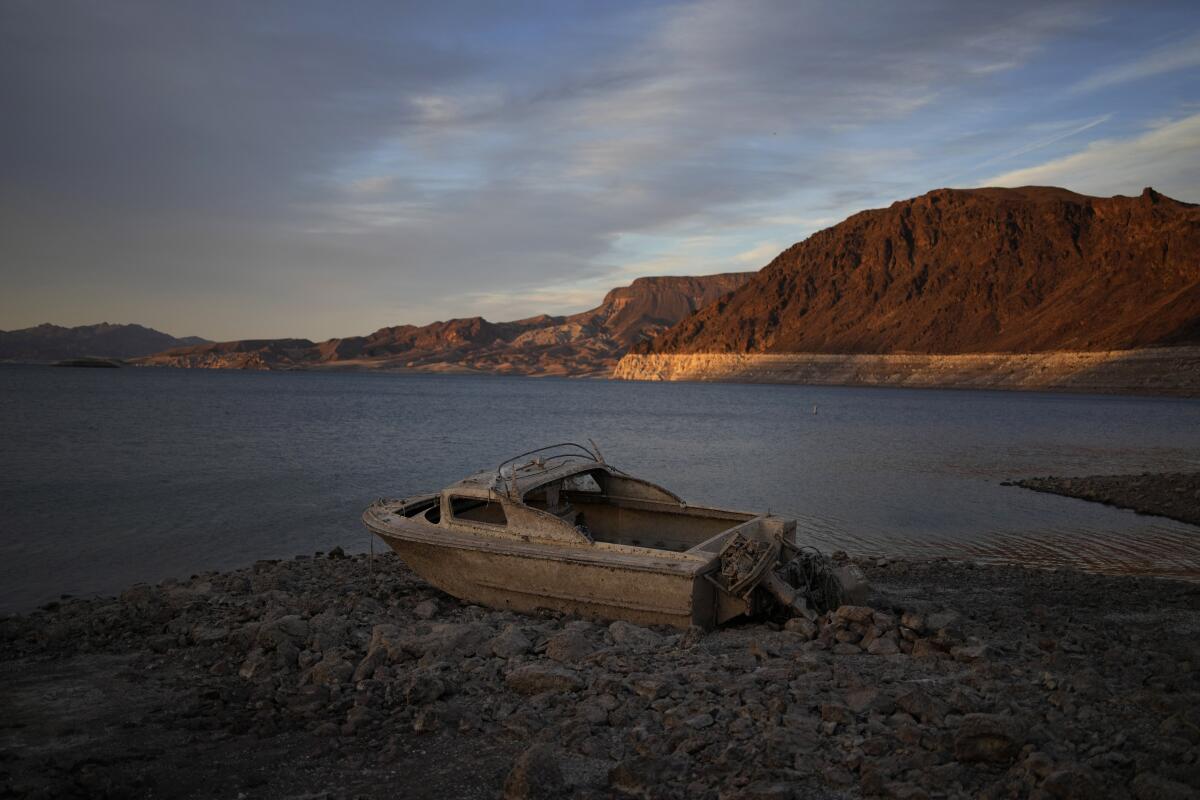
SAN DIEGO — San Diegans get more than half their water from the Colorado River. So why haven’t local leaders rung alarm bells as Lake Mead has shrunk to record-low levels?
While dead bodies and rotting boats continue to surface at the nation’s largest reservoir, many other water agencies across the Southwest are now scrambling ahead of a Tuesday deadline to draft an emergency deal for slashing annual consumption of the river up to 25%.
This story is for subscribers
We offer subscribers exclusive access to our best journalism.
Thank you for your support.
Their ultimate fear is “dead pool” — a situation in which Lake Mead gets so low that water will no longer flow out of Hoover Dam. At that point, turbines that currently produce enough hydroelectricity to power hundreds of thousands of homes will have long since stopped working.
However, amid the fervor, the wholesaler San Diego County Water Authority has stayed calm, repeatedly claiming the region has no shortage of water.
“I would get nervous when we hit dead pool status at Lake Mead,” said Jim Madaffer, who represents the water authority on California’s Colorado River Board. “That’s a long way from happening.”
To its credit, the agency has positioned itself relatively well over the last two decades to navigate the river’s historic drought, which has reached a new level of urgency in the last three years. Along with costly investments in desalination and dam storage, the agency inked a forward-looking deal for river water with farmers in the Imperial Valley.
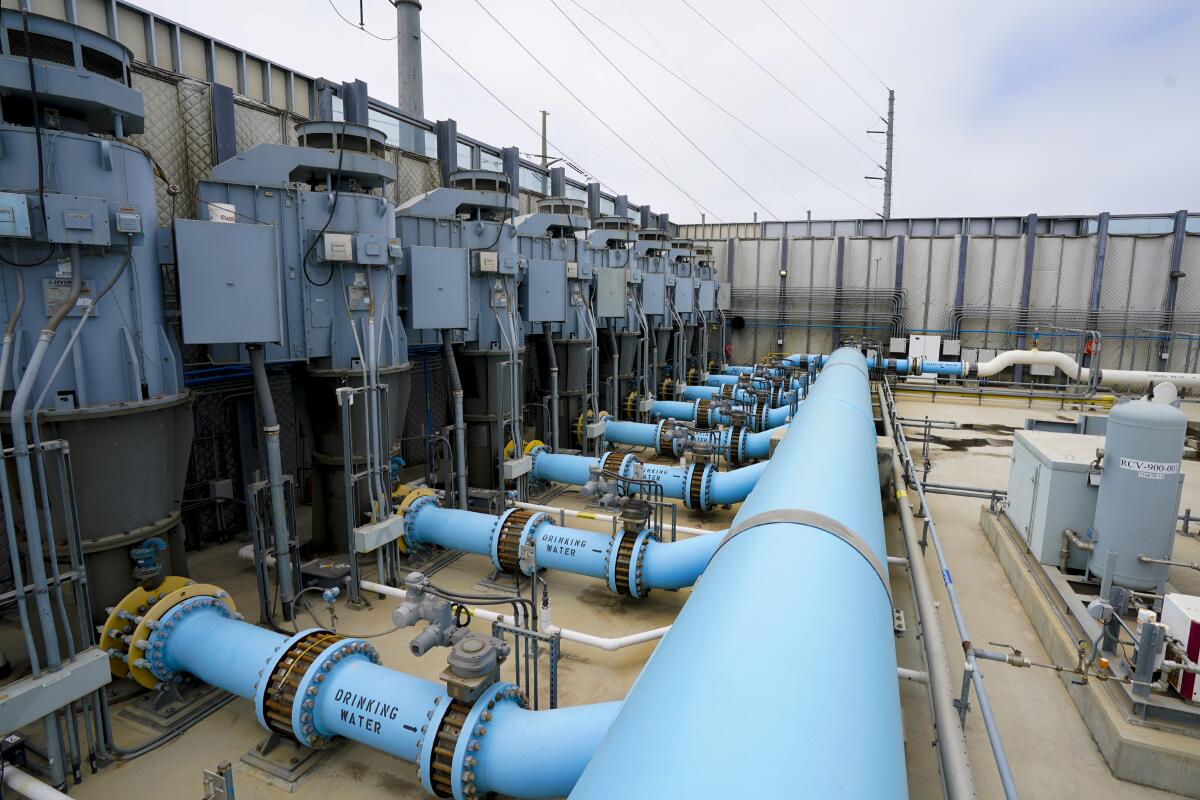
That arrangement has not only limited San Diego’s reliance on California’s beleaguered snowpack, it’s also arguably put the region at the end of the line to take cuts on the Colorado River.
As a perfect storm of aggressive conservation and expensive projects have sent utility bills soaring throughout the San Diego region, home and business owners have faced relatively little pressure from local leaders to further limit water use, especially compared with Northern California or the Los Angeles region.
“The investments we’ve made over the last 20 years truly are paying off,” said Madaffer, adding, “… and while it may not be fair to other parts of the state, hey, we’re paying the price for that resiliency.”
Meanwhile, powerful agencies — such as the Metropolitan Water District of Southern California and the Imperial Irrigation District, or IID — are now thrashing out a blueprint to rip up more urban lawns, upgrade irrigation systems and, most controversially, pay farmers with senior water rights to fallow land.
In June, the federal government set the Aug. 16 deadline for the seven basin states — led by California and Arizona — to reach an agreement on cutting water use by a whopping 2 million to 4 million acre-feet. Officials with the U.S. Bureau of Reclamation went so far as to threaten unilateral water cuts if negotiations break down, a move that would almost certainly trigger a protracted legal brawl.
Top agency officials have recognized the dire situation.
“We’re seeing the impacts of climate change in real time here in front of us in the western U.S.,” said Adel Hagekhalil, general manager of Metropolitan, at a recent board hearing. “The Colorado River has been very reliable for us, but we’re seeing conditions that are unprecedented.”
While San Diego is relatively well protected under current arrangements, some fear that rising temperatures and worsening drought could eventually upend a century of water rights on the river.
Outgoing IID board President James Hanks issued a grim prediction during a recent public hearing on the issue.
“I don’t think we have a timeframe of two years, like a lot of people think, before we reach dead pool,” he said. “My personal opinion is next year, we might be there, if something’s not done.”
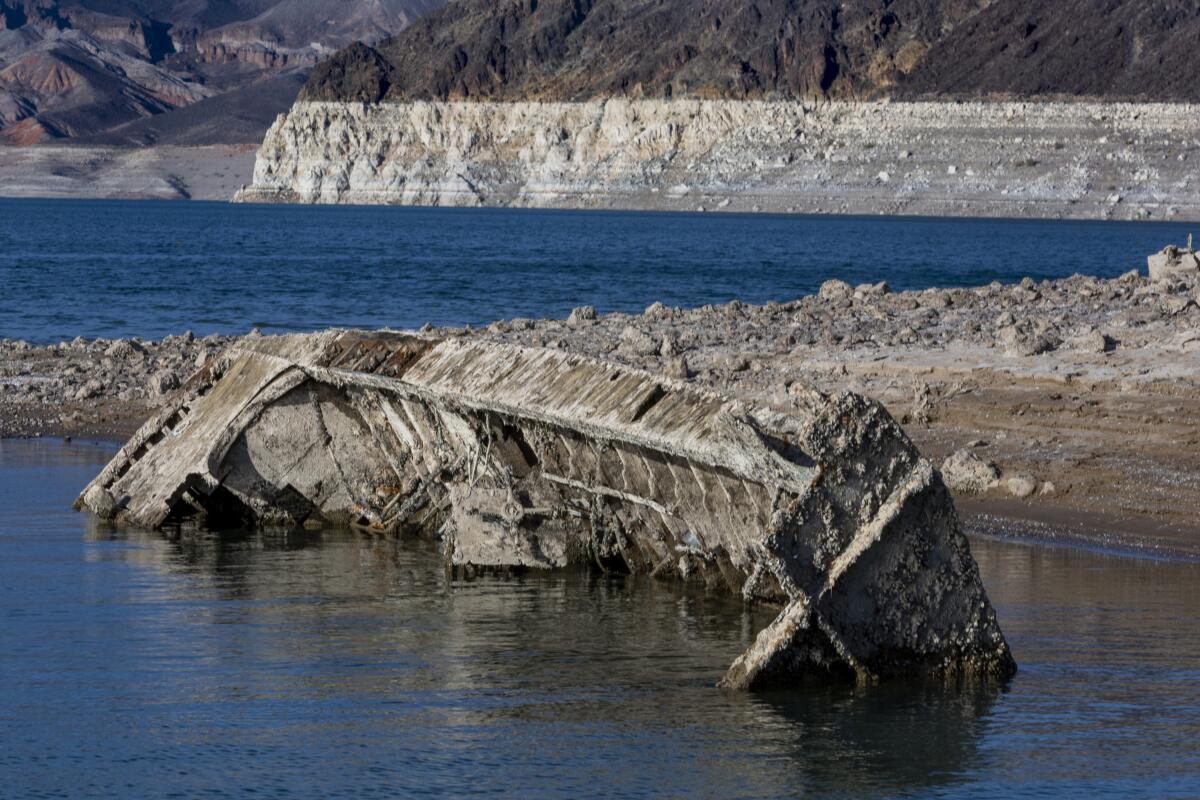
A fluid situation
San Diego’s relative stability is largely contingent on the success of ongoing negotiations between Metropolitan, IID and the Central Arizona Water Conservation District.
The San Diego region currently imports roughly 280,000 acre-feet of Colorado River water a year under a long-term agreement with IID. The largely agricultural district has a strong financial incentive to continue delivering those supplies in full to San Diego, unless the federal government steps in and mandates severe cuts.
Under such a situation, the water authority could see percentage reductions equal to whatever is mandated on IID by the Bureau of Reclamation, according to agency officials. An acre-foot is enough water to cover an acre a foot deep or supply about two average households a year in California.
Water managers are hopeful that by Tuesday, they’ll have the outlines of a grand bargain to cut annual use by more than 2 million acre-feet. Details will then likely need to be finalized by the spring to avoid federal intervention, especially if the mountains of Colorado and Wyoming experience below-average snowfall this winter.
“California and Arizona have been meeting and trying to close the gap,” said Bill Hasencamp, manager of Colorado River resources for Metropolitan. “I think we’re close.
“We’re all nervous because regardless of what the feds might say next week,” he added, “if it’s a really dry year next year, as a practical matter, if we don’t have an agreement, they may have to make cuts.”
Water levels at Lake Mead are currently hovering around 1,040 feet above sea level, down from 1,084 at this time in 2020, according to federal records. Hydropower stops working at 950 feet, and dead pool occurs at 895 feet.
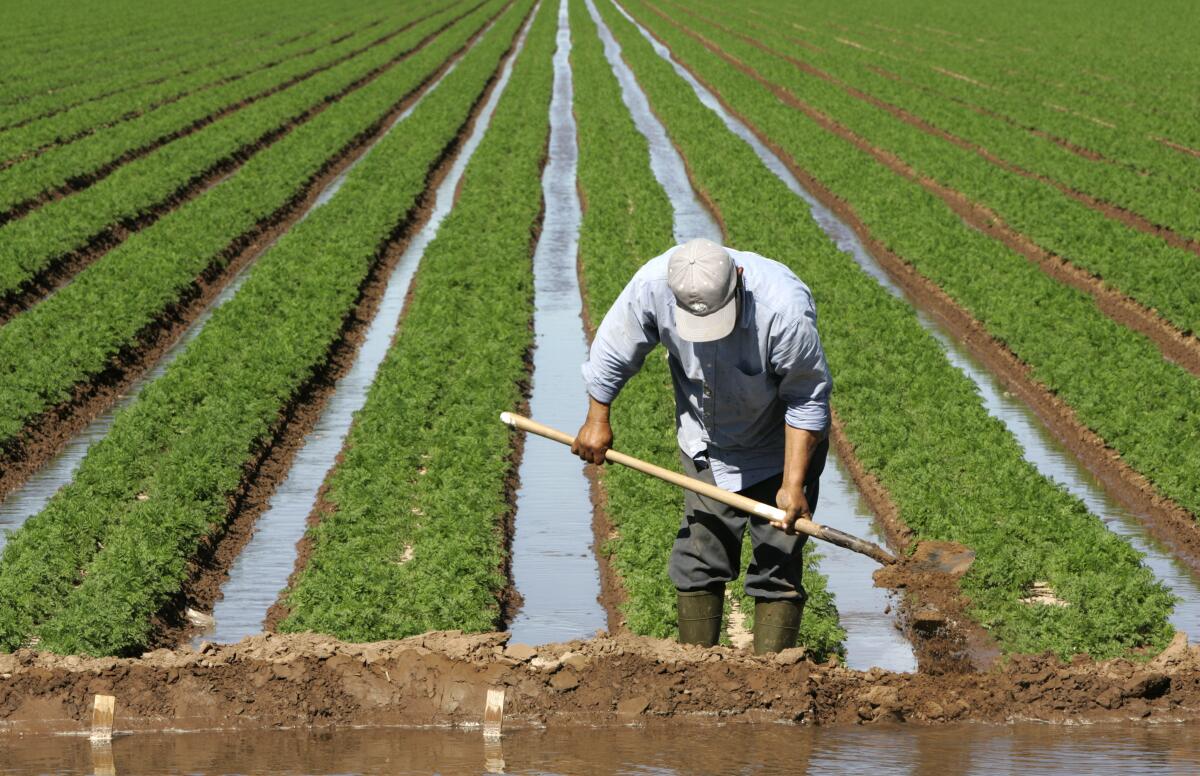
Sticking point
The major challenge in the ongoing negotiations is ensuring that agricultural communities aren’t financially decimated by the cuts. It’s an especially delicate situation since farmers in Southern California hold some of the highest priority water rights on the Colorado River and, at any point, could walk away from talks in favor of litigation.
Agricultural leaders have so far been willing to participate in a collective solution that doesn’t involve the courts. But that could change, especially if they start to view urban areas as unwilling to make equal sacrifices.
“You drive through the Metropolitan areas, and I still see a lot of green lawns,” said Stephen Benson, a third-generation vegetable farmer in Imperial Valley and former IID board member. “If I’m going to drop my business, I need to see a lot of other proactive conservation. Development’s still continuing uncontrolled, whether it be in Phoenix, Vegas or Los Angeles.”
This tension is also why San Diego is in such a relatively secure spot. The water authority’s deal with IID helped fund the type of conservation measures that many believe will be the lynchpin to stabilizing the river.
Specifically, the largely urban wholesaler struck a deal for the concrete lining of the All-American Canal, creating nearly 80,000 acre-feet of conserved water enjoyed by San Diegans. The conveyance system runs 82 miles from the Colorado River into the Imperial Valley.
The other 200,000 acre-feet were freed up under the deal with water authority with an initial period of agricultural fallowing, and have been sustained with investments in drip irrigation and other such technology on farms.
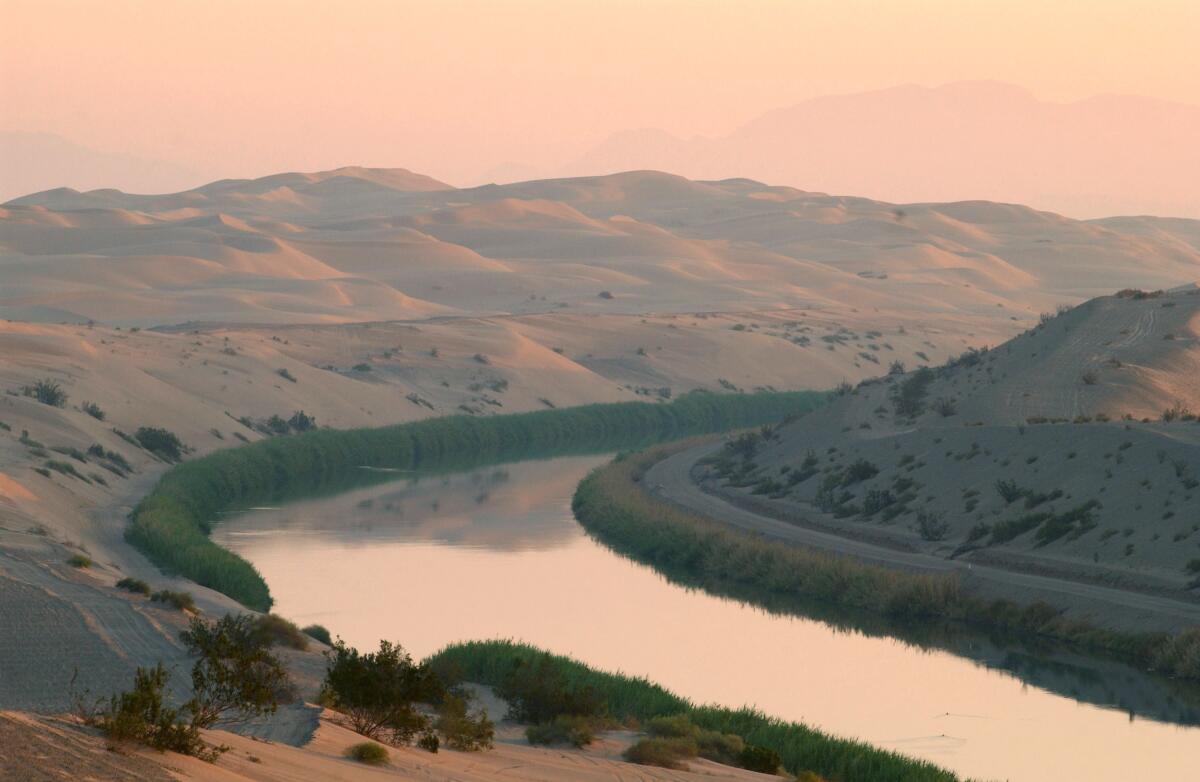
The federal government will likely want to promote these types of arrangements going forward, as evidenced by the recent inclusion of an eye-popping $4 billion for the Bureau of Reclamation in President Joe Biden’s Inflation Reduction Act, which recently passed the Senate.
The idea is to prioritize more canal lining, irrigation upgrades and almost certainly pay farmers not to farm, especially since agriculture uses roughly 80% of the water in the basin. Metropolitan already has a similar program with the Palo Verde Irrigation District in Riverside and Imperial counties, which frees up water for cities.
“Ag-to-urban transfers, those are the kinds of things we want to encourage for water reliability,” said Jeffrey Kightlinger, former general manager of Metropolitan. “Among the pecking order, [San Diego’s] going to be among the last to be cut.”
IID and other agricultural agencies recognize that fallowing land is almost certainly going to be necessary to stabilize the river. However, it’s an especially hard pill to swallow because taking land out of production creates myriad downstream financial impacts for often already economically challenged communities.
“When you fallow fields, you’re losing business for the hay brokers that buy and sell the hay,” said Tina Shields, water manager for IID. “Irrigators are not being hired. Sprinkler pipes are not being purchased. It’s a pretty significant ripple effect through the community.”
The agency in collaboration with the water authority set up a fund to help offset some of these types of impacts when it first struck its transfer agreement in 2003. The program was somewhat of a success, although it proved trickier than anticipated to administer, Shields said.
Metropolitan and IID have reportedly set their sights on collectively cutting roughly 400,000 acre-feet of Colorado River water by next year. That’s no small sum, especially for the Imperial Valley, which relies solely on about 2.6 million acre-feet of river water annually.
Of all the economic boats floating on the Colorado River, San Diego’s is relatively small and nimble. However, if drought continues for much longer or the ambitious deal to cut usage falls apart, even the well-positioned water authority may eventually run aground.
More to Read
Sign up for Essential California
The most important California stories and recommendations in your inbox every morning.
You may occasionally receive promotional content from the Los Angeles Times.


